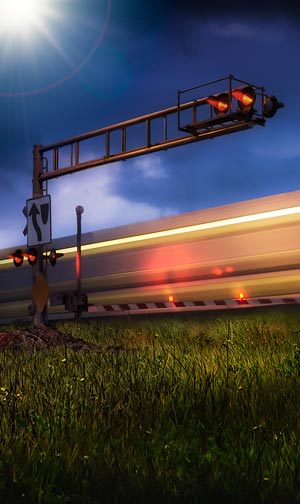NTSB Report Released: Union Pacific Blamed for Deadly 2018 Train Accident
On January 25th, 2021, the National Transportation Safety Board (NTSB) released a 45-page report and analysis on a deadly 2018 Union Pacific train accident that occurred in Wyoming (Collision of Union Pacific Railroad Train MGRCY04 with a Stationary Train, Granite Canyon, Wyoming).
In its comprehensive review and assessment of the crash, the NTSB assigned blame to the railroad company’s failure to adequately maintain its railcars. Here, our Union Pacific train accident lawyers provide an overview of the details and the findings included in the official report from the agency.
The Union Pacific Train Accident: A High-Speed Collision With a Stationary Train
On October 4th, 2018, a Union Pacific freight train struck the rear-end of another stationary Union Pacific train in a rural part of Wyoming. The crash occurred after the striking train crested a hill and descended for more than ten miles. The striking train, made up of more than 100 cars, was traveling at a speed of more than 50 miles per hour when the collision happened. Tragically, the freight train’s conductor and engineer were both killed in the accident.
The Immediate Cause: The Air Brakes Failed While the Train was Descending a Hill
In an investigation of the deadly train accident, the NTSB quickly determined that there was a brake failure. As the freight train went over the hill, the conductor applied the brakes. However, the train continued to accelerate. Soon after, the conductor also applied the emergency brakes. Unfortunately, the emergency brakes failed and the end-of-train device did not recognize the conductor’s command.
The Deeper Cause: Union Pacific Failed to Perform Required Air Brake Tests
Although the brake failure was assessed as the immediate cause of the Union Pacific train accident, the deeper cause was deemed to be the railroad company’s failure to adequately maintain its railcars. Air brakes are a critically important safety feature. Proper inspection, testing, and maintenance is a must. Here is what the federal agency found about the company’s testing:
- Union Pacific’s air hose inspections failed to identify critical air brake problems; and
- Air brake testing had not been performed on at least six railcars, despite federal requirements.
The NTSB report is clear: They believe that it is likely the safety problems could have been identified and remedied with proper testing. As explained by a representative of the NTSB, the fatal train accident may have been prevented if “Union Pacific followed the rules and conducted air brake tests.”
Call Our Union Pacific Train Accident Attorneys for Immediate Help
At Pottroff & Karlin, LLC, our Union Pacific train accident lawyers are aggressive, trustworthy advocates for victims and their families. With more than 90 percent of our total caseload dedicated to railroad accident injury claims, we know how to hold negligent corporations and insurers accountable. Call us today at 785-539-4656 or send us a message online to set up your free, fully confidential initial consultation. With a primary office in Manhattan, KS, we provide nationwide representation to train accident victims.


